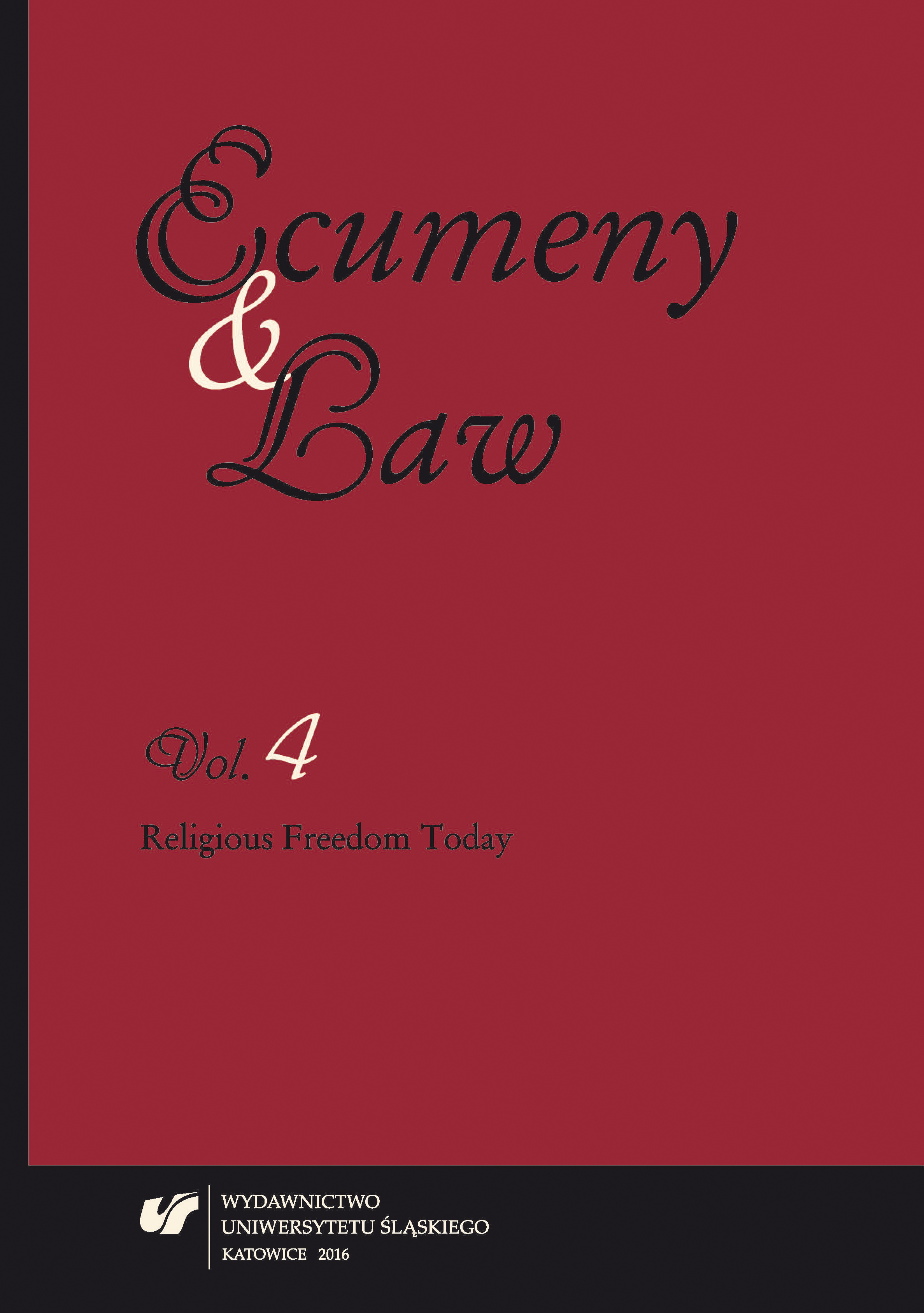Religious Freedom in Spain
Religious Freedom in Spain
Author(s): Piotr RygułaSubject(s): Christian Theology and Religion, Canon Law / Church Law, Sociology of Religion
Published by: Wydawnictwo Uniwersytetu Śląskiego
Keywords: ecclesiastical law; religious freedom; Church in Spain; Church-state relations; religious neutrality of the state; concordat; Spanish constitution; Vatican II’s declaration Dignitatis Humanae
Summary/Abstract: The article opens with a historical analysis of the sources of contemporary legalregulations concerning religious freedom in Spain. Thus, the author discusses the legislationfrom the period of the Second Spanish Republic and General Franco’s Spain. The text points to the fact that the political separation of Church and state, as well as the guaranty of “the freedom of conscience and the right to practice any religion in freedom” were included for the first time in the Republican Constitution of 9 December 1931 while the first law on religious freedom in Spain was introduced in 1967 during the period of General Franco’s rule. However, in both cases the freedom declared in the documents was limited by the Spanish legislator because of the axiological assumptions of contemporary political systems.Next, the author discusses the present-day legal regulations concerning religious freedom and religious neutrality of the Spanish state. The text analyzes Article 16 of the 1978 Constitution, which guarantees “individuals and communities […] the freedom of ideology, religion and worship,” as well as religious neutrality of the state. At the same time, the authorities are obliged “to consider religious beliefs of the Spanish people,” and “as a result, to maintain a cooperative relationship with the Catholic Church and other denominations.” The analysis encompasses also the activity of the Advisory Commit tee on Religious Freedom, as well as the content of cooperation agreements between the state and the particular confessional associations. The reader’s attention can be drawn to the point of view assumed by the authorin order to present the historical process of creating the Spanish legislation concerningreligious freedom. The author emphasizes the role of Vatican II’s teaching, especially thedeclaration Dignitatis Humanae, which allowed the Spanish legislator “to get free” fromthe restrictions imposed on the declared right to religious freedom, which were presentin both the republican regime and General Franco’s rule.
Journal: Ecumeny and Law
- Issue Year: 2016
- Issue No: 4
- Page Range: 145-163
- Page Count: 19
- Language: English

